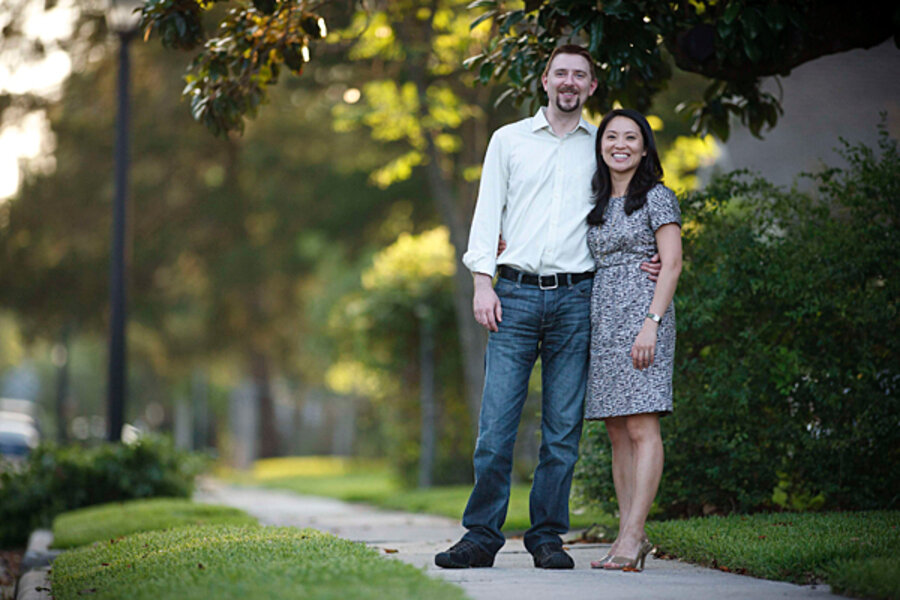Interracial marriage rate doubles in 30 years: how US attitudes have changed
Loading...
The rate at which Americans marry someone of another race has more than doubled over the past three decades, a sign of increasing public acceptance of once-taboo relationships.
About 15 percent of all new marriages in the United States in 2010 were between spouses of different race or ethnicity, according to a new report by the Pew Research Center. In 1980 the share was 6.7 percent. The Pew Center refers to marriages of mixed ethnicity in cases where Latinos and non-Latinos married.
Alongside the growing numbers of such mixed marriages, American approval of family ties that cross racial and ethnic lines has been rising.
The Pew report draws on the center's own polling, as well as on Census records relating to marriage. In Pew's polling during the past three years, 63 percent of Americans say it “would be fine” with them if a member of their own family were to marry someone outside their own racial or ethnic group.
In 1986, the public was divided about this, with 28 percent saying interracial marriage was not acceptable for anyone, and an additional 37 percent saying it may be acceptable for others, but not for themselves. Only one-third of the public viewed interracial marriage as acceptable for everyone.
Today, 35 percent of Americans say they have an immediate family member or close relative who is currently married to someone of a different race.
All this doesn't mean that race has become a meaningless concept for Americans.
A USA Today/Gallup poll last year found, for instance, that 46 percent of Americans (including 44 percent of whites and 55 percent of blacks) agreed with the statement that relations between blacks and whites "will always be a problem for the United States," while a majority of the public sided with the view that "a solution will eventually be worked out."
But the weight race carries for social relations has clearly declined for individual Americans.
In Gallup polls asking "do you approve or disapprove" of marriage between blacks and whites, the results have shifted dramatically over the past half century.
In 1958, some 94 percent of Americans disapproved. (The phrasing of the question then was slightly different, referring to "colored people.") By last year, 86 percent said they approved, while 11 percent said they disapproved.
Interracial unions remain a small share of marriages overall. Looking at all married couples in 2010, regardless of when they married, Pew found that intermarriages accounted for 8.4 percent of the total, up from just 3.2 percent in 1980.
Among all newlyweds in 2010, nine percent of whites, 17 percent of African-Americans, 26 percent of Hispanics, and 28 percent of Asian-Americans "married out" (outside their own race), the center reported in its study, released Thursday.
Even as Americans feel freer to find a marriage partner without race as a barrier, the institution of marriage faces strains on other fronts, however.
The National Marriage Project, a research group based at the University of Virginia, has documented what it calls a worrisome decline of marriage, particularly among poorer and working-class Americans. A new book by scholar Charles Murray, "Coming Apart," points to the same trend as a factor fraying America's social fabric.
In addition, many younger Americans are postponing marriage, not because they don't feel its important but, in part, because the high divorce rates they witnessed among their parents have made them wary of failure. A record 41 percent of children born today are born to unmarried women, according to Pew research cited in a recent Christian Science Monitor magazine cover story on the "Generation-Y" marriage trends.







